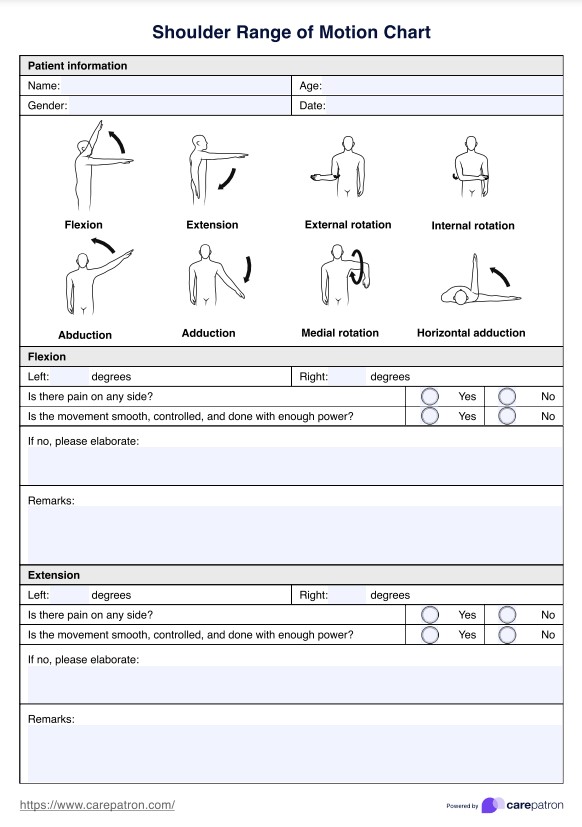Practitioners who specialize in anything connected to the shoulder - whether that's examining, diagnosing any condition/injury, or treating - such as physical therapists, orthopedic therapists, general physicians, and sports medicine physicians, are more like to use the Shoulder Range of Motion Charts template.

Shoulder Range Of Motion Charts
Use our free chart template to assess your patient’s shoulder range of motion to detect any underlying injuries.
Shoulder Range Of Motion Charts Template
Commonly asked questions
It is designed to be used while the referring physician conducts a shoulder range of motion test. In a broader context, however, it can be used to examine a shoulder for a possible injury, check if the physical therapy sessions are effective, and determine if a patient can participate in activities where the shoulder is heavily used.
These charts are primarily used as a document to take down the test results. However, it can also be used as a guide when conducting the test or as a reference for any treatment after discovering an underlying injury.
EHR and practice management software
Get started for free
*No credit card required
Free
$0/usd
Unlimited clients
Telehealth
1GB of storage
Client portal text
Automated billing and online payments











